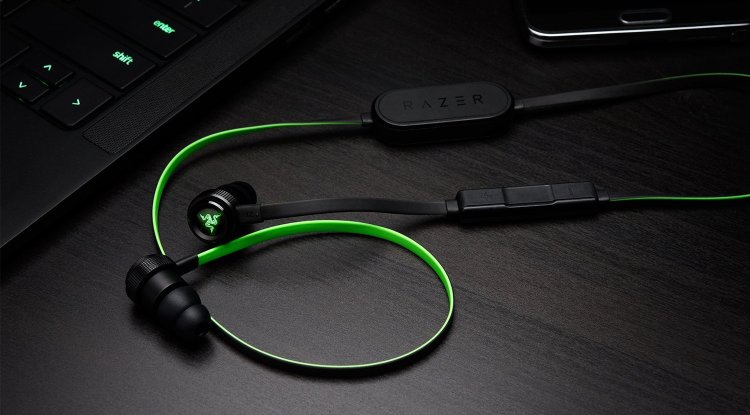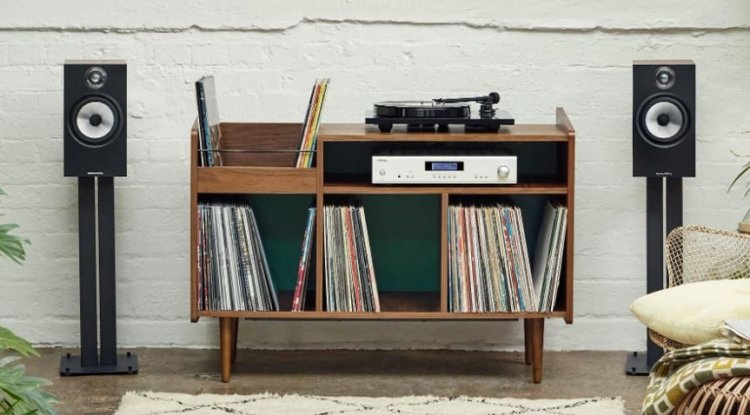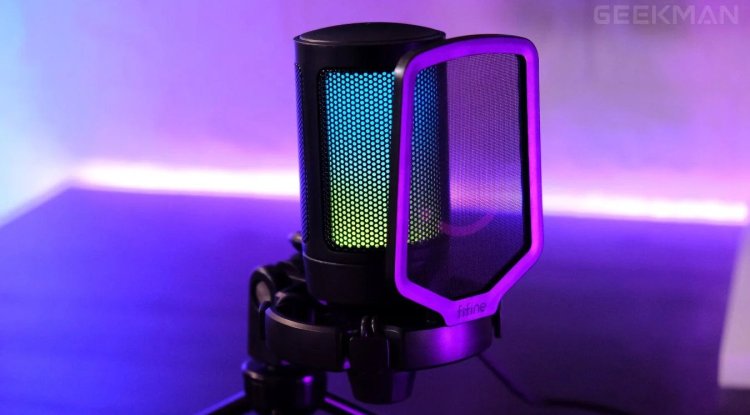What does Hi-Res audio bring us?

What is the difference between 16-bit and 24-bit sounds? More and more music streaming services offer high res sound quality, which has introduced new ideas and numbers into ordinary conversation.
Is the kHz number important? Is the lossless sound really superior to compressed sound?
You are not alone if you are confused.
While some parts of the high-definition sound are well defined, others are not. Moreover, as the industry grows, streaming services are creating their own branding strategies for their Hi-Res packages. With this article, we will walk you through the fundamentals of hi-res audio so that you may make an informed decision about the quality of sound you want to listen to on streaming services.
What makes a hi-res sound?
When you discuss high definition sound, you end up trying to answer one major question: how many parallels exist between the audio I listen to and how the music sounded in the studio?
The easiest way to find out is to examine the digital audio recording using two separate measurements: bit depth (expressed in "bits") and sampling rate (expressed in kilohertz or "kHz").
Bit depth
To begin, we must state the obvious: there are some sounds that are too quiet for people to hear, such as a tiny feather dragged over a glass pane. Despite the fact that this activity generates sound, we do not hear it. In contrast, there are some sounds that are so loud that listening to them might permanently destroy our hearing (the reason why you never want to stand next to a jet engine).
The range of sounds that individuals can hear and enjoy is between these two extremes.
The depth of the bit indicates whether we can hear the quietest sound in a song all the way through to the loudest sound – from the weakest whisper to the loudest cymbal sound.
When listening to music, two-bit depths are necessary to consider: the depth at which the original song was recorded in the studio and the depth at which the audio file you are listening to is streamed, downloaded, or released from the CD.
The two most common bit depths mentioned are 24-bit and 16-bit
The bit depth at which digital music is recorded in the studio is 24 bits. It is also the level of detail at which the music file you are listening to is termed "hi-res."
16-bit: This bit depth is commonly referred to as "CD quality." When you listen to a song on a CD, you are hearing a 16-bit tune. At this level of detail, you should be able to hear both the quietest and loudest sounds in the song. So, why record music at a depth larger than 16-bit if 16-bit covers the complete range of volume we want to hear while listening? We'll get to that shortly.
Sampling rate
Our ears can only detect a limited range of frequencies. You've surely heard of the dog whistle, which emits such a high-frequency sound that humans cannot hear it but dogs can.
There is a restricted range of frequencies that we can hear, similar to the range of quiet to loud sounds that have already been discussed. This range is between 20 Hz to 20,000 Hz for someone with perfect hearing (or 20 kHz).
So, when 16 bits were chosen as the standard bit depth for CDs, 44.1 kHz was picked as the standard sample rate because it includes the whole range of frequencies that people can hear.
Why didn’t we always listen in high definition?
Why not constantly listen to the original files - 24-bit digital files recorded in studios - if we want to hear music that sounds exactly the way it was recorded in the studio? Because those files are massive, in a nutshell. And getting such massive files from the studio to our ears has been (and continues to be) difficult.
To understand how this technique works, we must first discuss audio files. And, like most excellent stories, it begins in the early 1980s.
When the CD initially came out, it couldn't hold a complete album of 24-bit tunes. As a result, while creating a CD, the studio's original 24-bit songs had to be reduced to smaller, 16-bit files.
Then came the internet, which revolutionized the way we share almost everything. The letters evolved into emails. Brochures have evolved into web pages. The conversations were transferred to chat windows.
However, whereas words may be easily communicated electronically using extremely small files, even 16-bit files were too large to upload online, and original 24-bit music files were even smaller. So, in order for music to be efficiently delivered online, the music files had to be even smaller. In order to accomplish this, the original audio files are compressed.
There are two methods of compressing files: lossy and lossless
Lossy (examples: mp3, AAC, VMA, OGG): This method discards small chunks of music from the original track to minimize it. The discarded pieces are picked based on how unlikely it is that someone will overlook them. However, it is always a precarious path. To keep the loss file as small as possible, you must delete more and more noises. The more noises that are deleted, the more probable it is that the listener will notice that certain aspects are missing. And the more noises the listener realizes are absent, the lower the quality of the song is perceived to be.
Another thing to keep in mind is that the quality of lossy audio is not measured in the same manner that it is for uncompressed and lossless audio. Quality is instead assessed in kilobits per second (kbps), often known as a bit rate (not to be confused with bit depth).
Lossless (examples: FLAC, ALAC): Lossless compression is the greatest approach to compress a file without sacrificing audio quality. Similar to the concept of a ZIP file, compressing a song into a lossless file means that nothing is lost when you reopen the file to listen to the song (or "decompress" it). The song is heard precisely as it was before being compressed into a lossless format. Lossless files are now used by streaming services that provide high-definition audio.
Sound from the studio
By using a simple comparison, Greg McAllister, senior sound experience manager at Sonos, a renowned developer of multiroom audio solutions for the home, explains why sound engineers record music in 24-bit. "Assume you're attempting to catch a small fish with a small net," he explained. "Because your net's circle is somewhat larger than the fish's, you should be able to catch the fish with the net you have."
However, if you have a larger net with a much broader range, catching that same fish will be a lot easier. He then applies the analogy to the studio: "recording on 16-bit is like recording sound on a small network, whereas recording sound on 24-bit is like recording sound on a large network." By using a broad network, you increase your margin of error and make the procedure much easier.
Sound from your speakers
For many years, the highest bit depth and sampling rate that could be streamed on speakers such as the Sonos were CD quality. And, because 16-bit and 44.1 kHz audio files include the entire volume and frequency range of the music, the sound quality is outstanding.
Most Sonos products now support high-definition sound (24-bit, 48-kHz) via Amazon Music Unlimited streaming. Why would you want to listen to high-definition music?
McAllister explains once more. "The benefit of listening to high-definition music is that you're hearing a real file from the studio," he explained.
There was no need for conversion to convert the 24-bit tape to 16-bit. Listening to a 24-bit track ensures that you are hearing the sound exactly as it was recorded in the studio.
So, to return to our original question, how accurately does the audio I listen reflect how the song sounded in the studio?
The answer depends on two factors: the song you're listening to and the device you're listening to it on. Of course, your phone's speakers will not be able to handle high-definition audio. However, if you listen to a high-resolution song through great headphones or Sonos speakers, you're creating the finest possible environment to hear the song as it sounded in the recording studio.
For now, the mentioned Sonos products can play 24-bit music at 48 kHz: Roam, Arc, Beam (both generations), Five, Sub (all generations), Move, One, One SL, Port, Amplifier, Play: 5 (Gen 2), Connect Amp (Gen 2)…
Sonos presently supports high-definition audio streaming from Amazon Music Unlimited (up to 24-bit, 192 kHz). To listen to high-definition sound from Amazon Music on Sonos (which Amazon refers to as "Ultra HD"), you must first sign up for Amazon Music Unlimited (note: when streaming on Sonos, the maximum sampling rate is 48 kHz).
Try it and decide
After all, you are the only one who can decide whether or not the high-definition sound is good for you. So give it a shot! Amazon Music Unlimited provides a free trial period. Choose a song that you are acquainted with, listen to it the way you are now, then listen to it again in high definition and see if you notice a change.





































